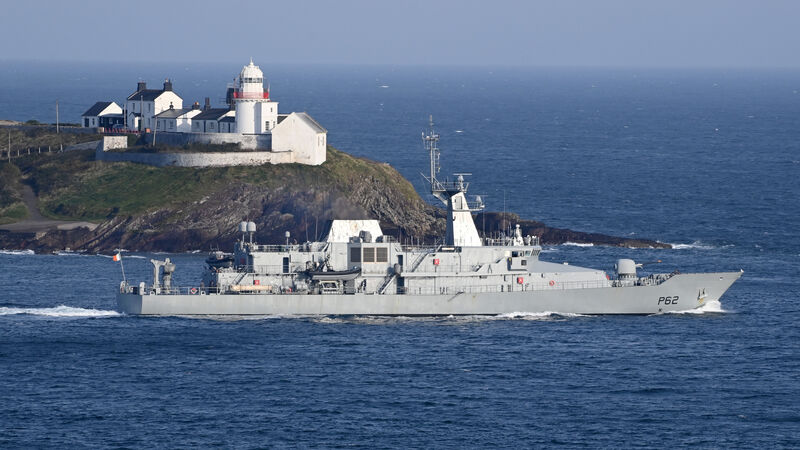Number of patrol days carried out by naval service more than halved

LÉ James Joyce is one of the naval service's four P60 class offshore patrol vessels. Picture: Eddie O'Hare
The number of patrol days carried out by the Irish naval service has more than halved in the last five years, the latest official figures show.
The grim confirmation comes as navies across northern Europe and the Baltics have significantly increased patrols amid rising incidents, many suspicious, of critical energy pipelines and digital cables being cut.
The latest figures show a dramatic reduction in completed naval service patrol days in the last five years:
- 2020 — 1,007;
- 2021 — 832;
- 2022 — 790;
- 2023 — 520;
- 2024 — 428.
It represents a drop of 57% in the number of completed patrol days since 2020.
While Ireland’s territorial waters span out to 12 nautical miles off the coast, we also have responsibility for the exclusive economic zone (EEZ) which stretches to 200 nautical miles off the south and west coast, an area equivalent to 10 times the landmass of the country.
While the naval service currently has a fleet of eight commissioned vessels, only five are available for operations, including four P60 class offshore patrol vessels.
It is understood that two of the P60 vessels are being regularly used, with one on patrol and one off patrol at any one time, which they rotate.
One P60 is on standby, while the fourth P60 is undergoing extended maintenance.
As well as one P60 being on patrol, one inshore patrol vessel is also out.
Last November, LÉ James Joyce, one of the four P60 vessels, shadowed a Russian ‘subsea spy ship’ after it entered Irish-controlled waters and patrolled over a cluster of data cables and electricity connectors.
LÉ James Joyce monitored the Yantar “research vessel” and escorted it out of the EEZ, assisted by an air corps maritime surveillance plane.
The Commission on the Defence Forces, which published a report in February 2022, outlined three sets of options — LOA1 being the status quo, LOA2 representing a modest increase in investment, and LOA3 bringing Ireland up to comparative states in Europe.
The Government opted for LOA2, which would see nine vessels, with double crews, by 2030. This would require 700 extra naval personnel, costing €35m, bringing the target number of personnel to almost 1,800.
A naval service reserve of a minimum 400 people was further recommended.
At the end of 2024, the naval service had a strength of 719, compared to 902 in 2020.
The dramatic fall has resulted from more leaving the service than entering it, a trend also seen in the army and air corps.
On average, 100 sailors left each year between 2000 and 2023, but only 62 entered annually.
That changed last year, when 97 people were inducted, compared to 75 who left, giving a net increase of 22.
Naval officers are hopeful that this will continue, assisted by improved pay and allowances and conditions across the Defence Forces.
Starting pay for a recruit (after completing 24 weeks’ training) is now over €40,000. For cadets, school leavers (after commissioning) start on over €44,000, while graduate cadets (on commissioning) start on almost €50,000.





